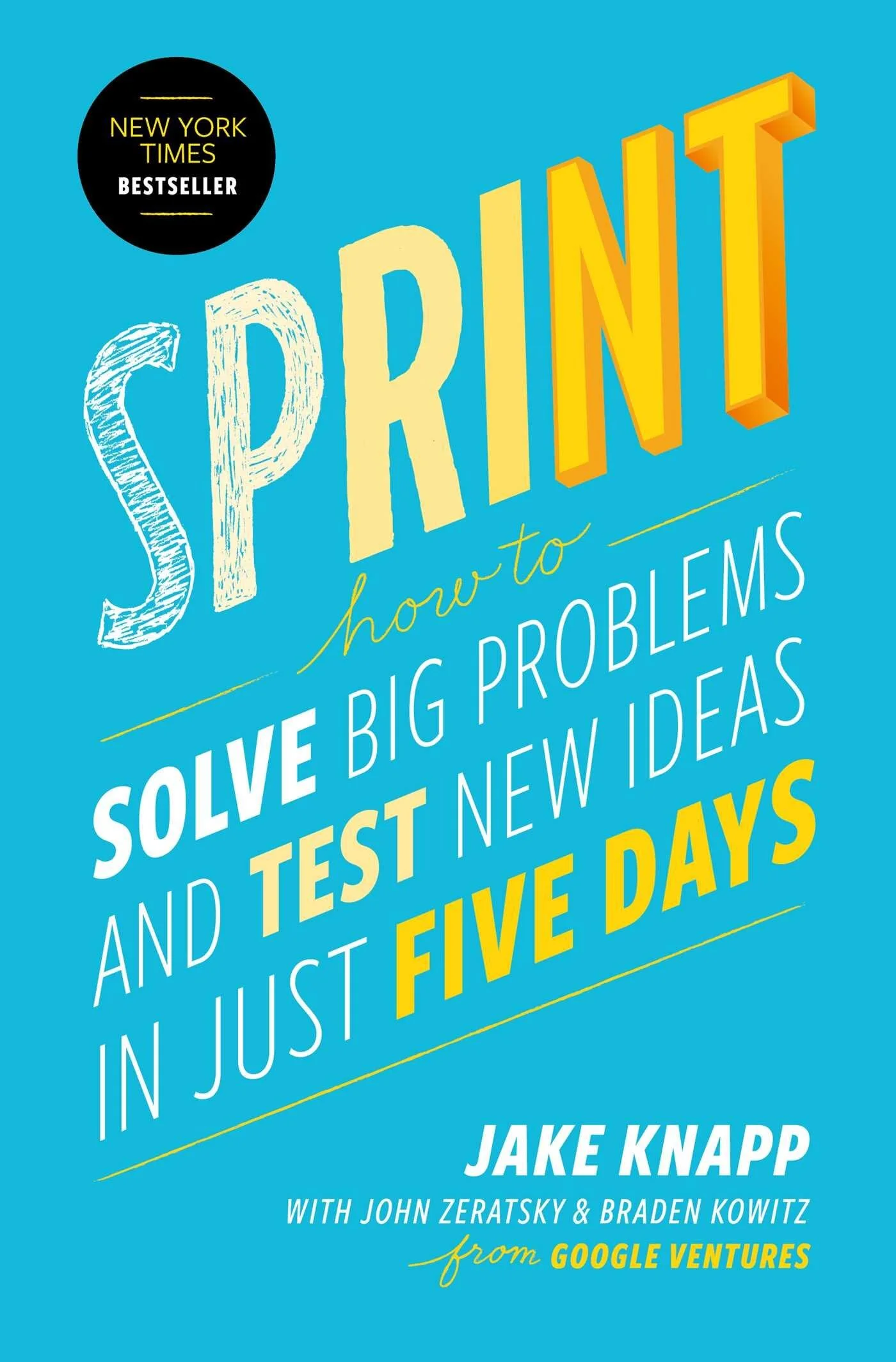Book Review: Sprint
Author: Jake Knapp with John Zeratsky and Braden Kowitz
Why you should read this book: Sprint is a recipe-like guide to running your own design sprint. Think of it as “Design Sprints for Dummies”. For those of you familiar with the “Dummies” line of books, they were famous for bringing hard concepts to anyone willing to learn (think investing, etc). Or if you’re a cook, think of it as if one of the Cooks Illustrated folks wrote a book about design sprints. Jake Knapp has run over 100 of these sprints and his advice shows this experience. The exercises are valuable and repeatable which makes this book indispensable for product teams.
What’s unique about this book: It’s one of the FEW books solely dedicated to Product Discovery. If you want to self-educate on Product Discovery, start by reading this book and doing a sprint with your colleagues. Also check out Alberto Savoia’s The Right It
The review: This book makes design sprints accessible to everyone. Though I tend to use the exercises in an “ala carte” fashion rather than try to execute 5 day workshops. The sprint concept of getting it all done sounds nice but for most teams, you need to find a rhythm of doing product discovery. This rhythm is typically doing the Sprint exercises over two weeks as you can fit it into your schedule. Of course, when you need a focus, have an important problem and need to get a variety of stakeholders focused then the 5 day sprint can work (though I still do it in 4 days).
Sprint helps you generate lots of ideas but teams need to be laser focused on the value that these ideas bring to the customer. I add additional exercises to write success metrics and determine the problem/opportunity that’s being solved.
A common mistake in design sprints is to focus on usability and task completion rather than whether the user actually wants/needs the concept being tested. Sprint could do more to warn against this common pitfall.
My tweaks to Sprint are to focus more on problems and creating value and to shorten the time needed (most of my clients won’t devote 5 full days). The essential sessions from Sprint are:
User Map (with Expert review or just Expert participation to shorten time)
(my session) Affinity Mapping with Problems
In the section “Organize How Might We notes” in the book….instead organize the HMW notes by problems. You will need to spend some time restating HMW notes into problem statements and going deeper into the problems.Then you can dot vote on problems which leads to a better final focus for the design sprint.
(my session) What is Success: Determine success metrics
Lightning Demos
Crazy 8s
Solution Sketching
(my session) Experiment Design (similar to the Storyboard session)
Prototype Building
Rumble (always test multiple options and make sure those options are sufficiently different from each other)
User Testing
There’s so much detail in the book that it’s spawned a cottage industry of digest guides even one from the authors.
At a Product Tank meetup here in San Francisco, the Google.com designers admitted that they only do three day sprints.
If you really want to do one of these sprints, I lead design sprint workshops for startups and corporations.
One awesome takeaway: There are facilitation tips and tricks sprinkled throughout the Sprint book that are fantastic for leading groups and getting the most out of individuals in a group setting.
What’s unique about this book: It ditches the wordy theory typical of non-fiction to give us tightly worded, practical exercises that we can do ourselves.
Audience: PMs. Designers.
Style: Prescriptive like a recipe. Should be read front to back. And then can be used as a reference.
Jim Morris, Product Discovery Group
Jim coaches Product Management organizations in startups, growth companies, and Fortune 100s.
He's a Silicon Valley entrepreneur with over two decades of experience including an IPO ($450 million) and a buyout ($168 million). These days, he coaches Product leaders and teams to find product-market fit and accelerate growth across a variety of industries and business models.
Jim graduated from Stanford University with a BS in Computer Science and currently lectures at UC Berkeley in Product Management.


